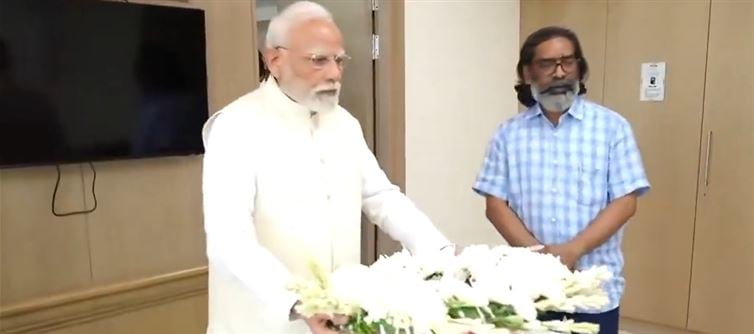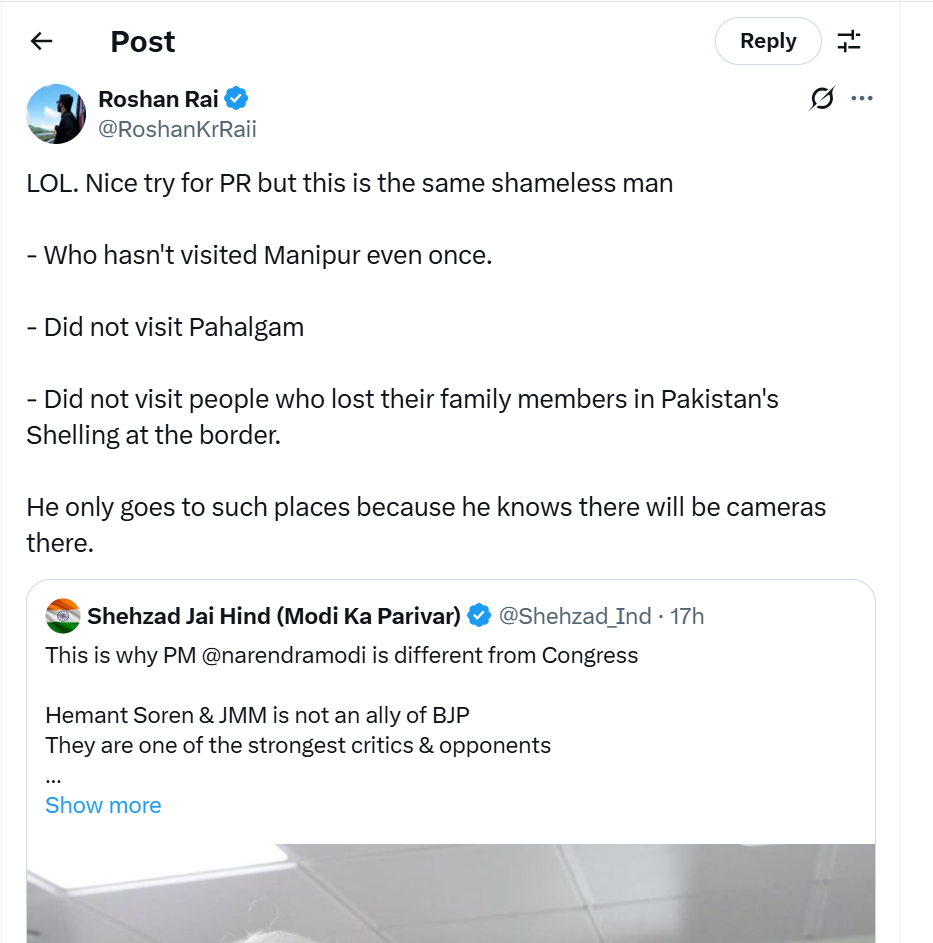
Critics pointed out a troubling pattern — that Modi has often chosen high-visibility events for appearances, while conspicuously avoiding areas that have seen deep trauma and tragedy. Many were quick to recall that the prime minister has never set foot in Manipur, even after months of ethnic violence and humanitarian crisis.
 Others pointed out his absence in Pahalgam, following the tragic militant attack, and his silence towards families affected by cross-border shelling along the LOC. These citizens feel ignored and forgotten, and the contrast between his silence in these moments and his highly publicized appearances elsewhere has sparked outrage. They argue that Modi’s selective presence speaks volumes about his priorities—more about optics than empathy.
Others pointed out his absence in Pahalgam, following the tragic militant attack, and his silence towards families affected by cross-border shelling along the LOC. These citizens feel ignored and forgotten, and the contrast between his silence in these moments and his highly publicized appearances elsewhere has sparked outrage. They argue that Modi’s selective presence speaks volumes about his priorities—more about optics than empathy.The backlash on social media has been sharp and biting. One viral comment summed up the mood: “Wow, even condolences come with lighting and camera angles. Truly a masterclass in turning every moment into PR, grief included.” This sentiment reflects a growing disillusionment with what some call the over-curated image of a leader who never misses a photo op but often misses the chance to show genuine solidarity in the darkest moments. As india continues to face internal conflicts, border tensions, and regional tragedies, many citizens are demanding less showmanship and more statesmanship—expecting their leader to be present not just when the cameras are rolling, but when the nation is hurting.




 click and follow Indiaherald WhatsApp channel
click and follow Indiaherald WhatsApp channel